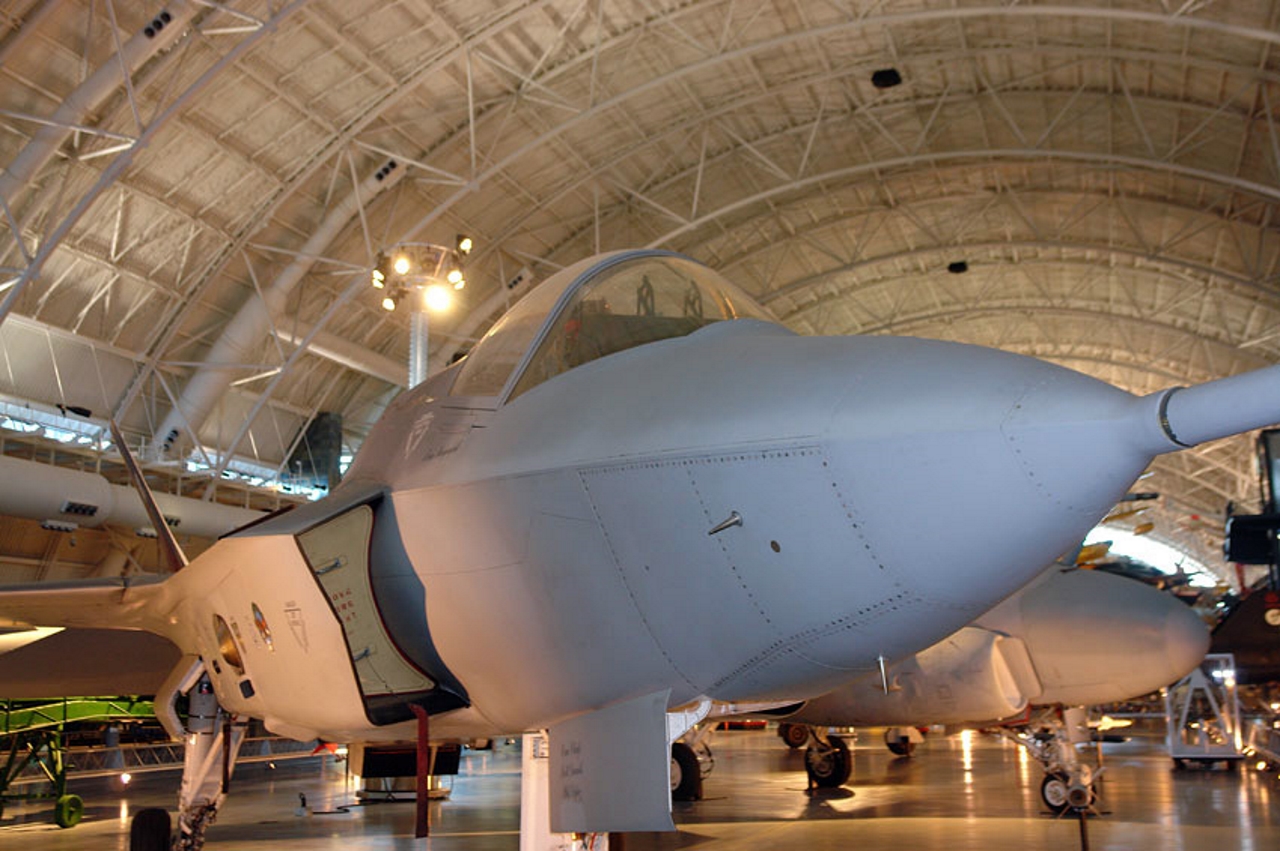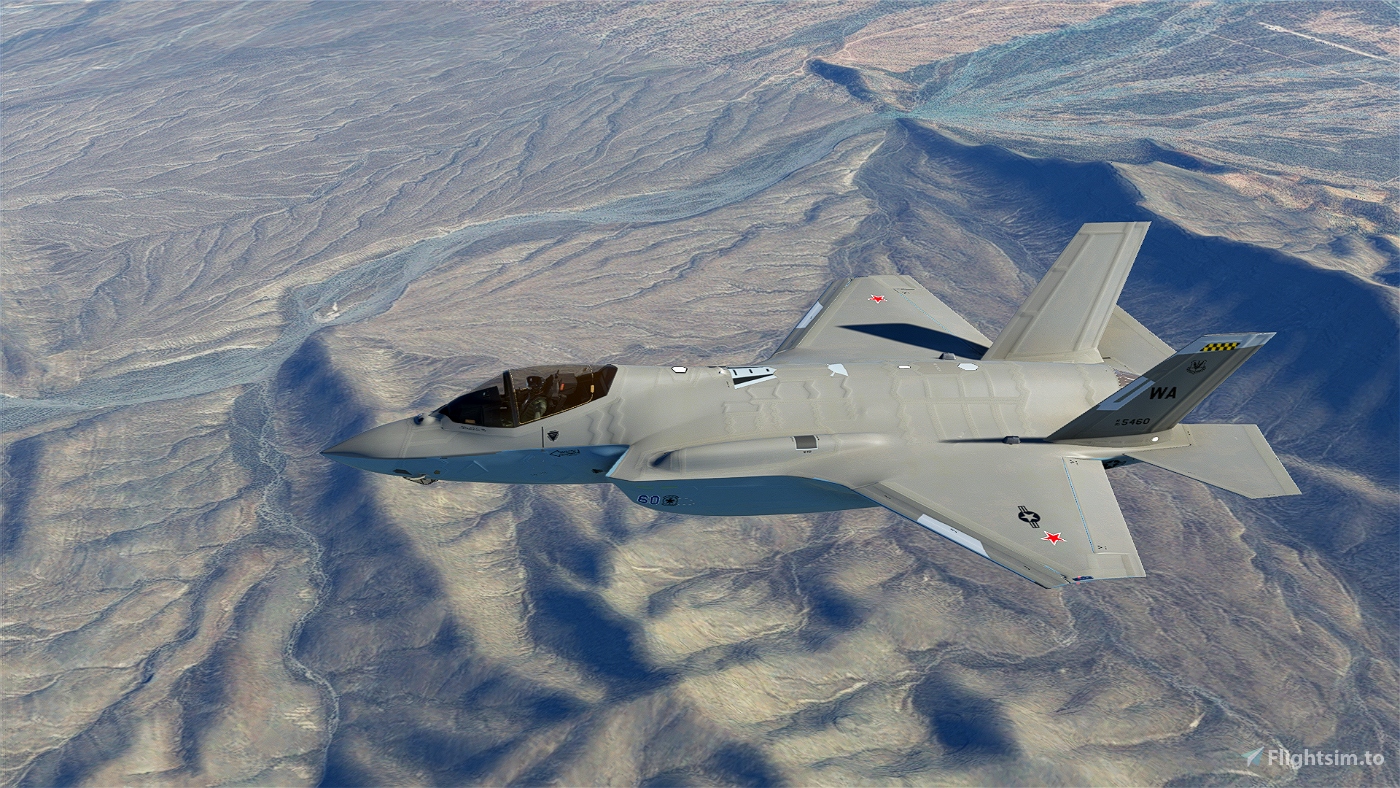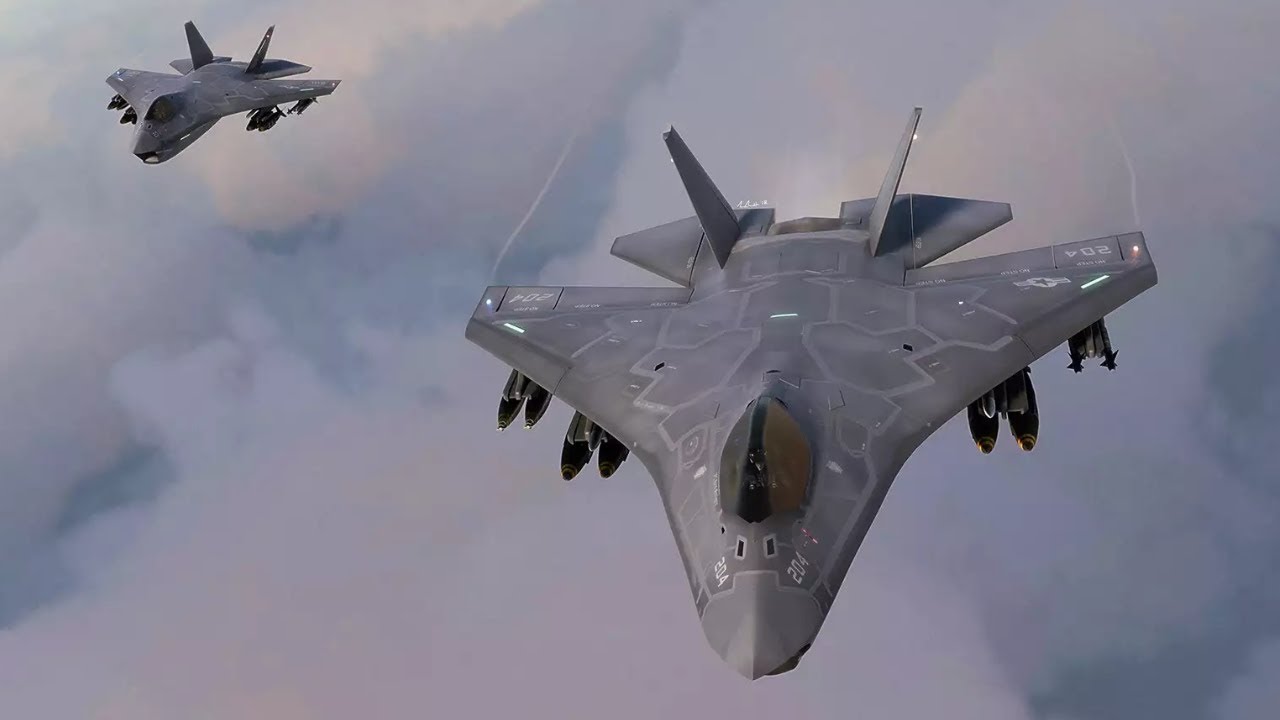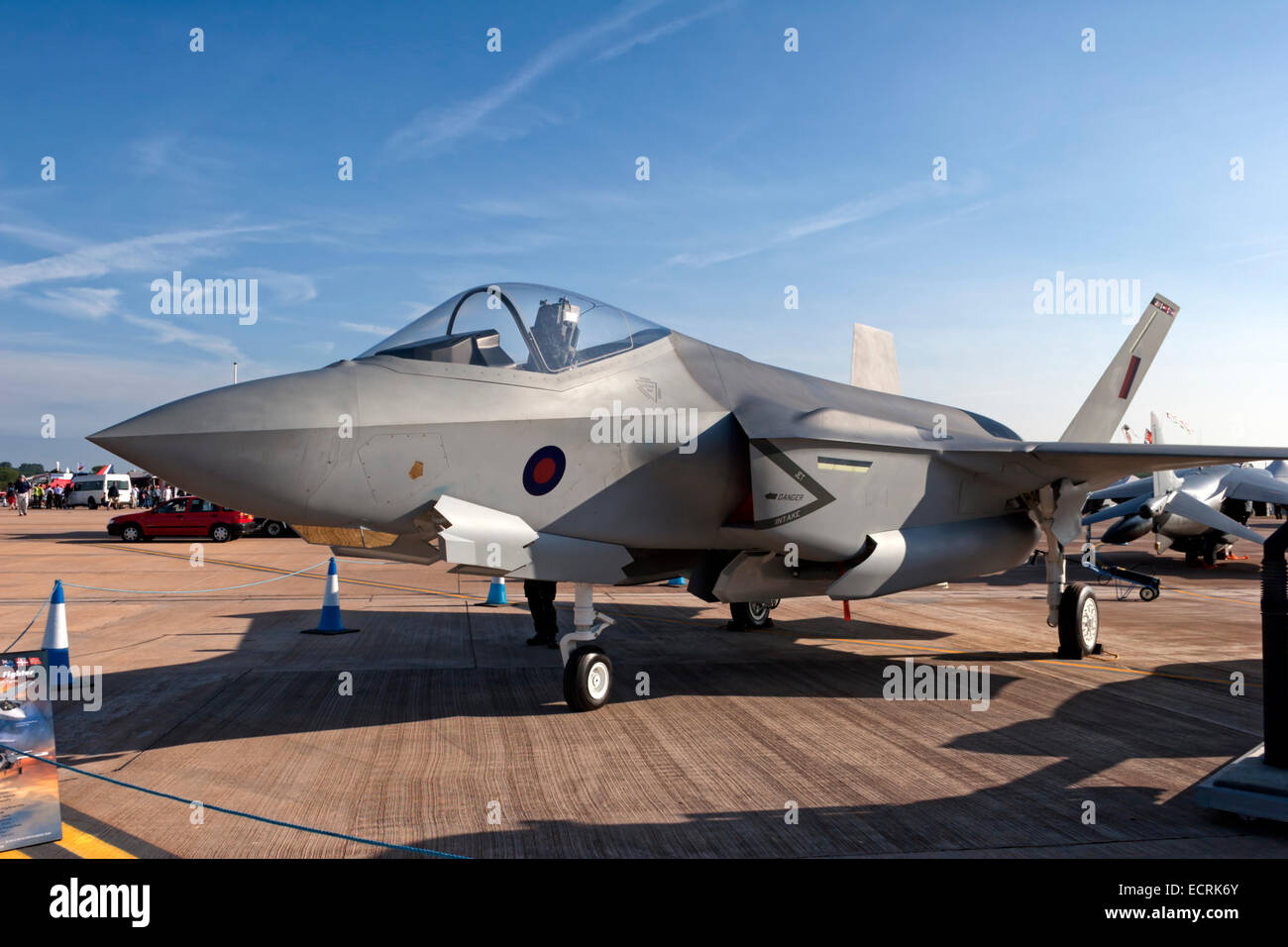X35 Aircraft - On July 20, 2001, Lockheed Martin, US military officials and the aviation community focused their attention on an X-35, a concept demonstration aircraft that would later become known as the F-35, at Edwards Air Force Base, California. , when it embarked on a journey to pass one of the most important flight tests in aviation history, Mission X.
The F-35B was designed to replace the Marine Corps' aging fleet of British Harriers. The F-35B variant is the world's first long-range supersonic short-takeoff, vertical-landing stealth aircraft and is designed to operate from fixed bases and multiple air-capable carriers. In fact, it can land on even the tiniest of footprints, just like a helicopter. These new capabilities are made possible by a unique, proprietary design known as a shaft-driven lift fan developed by Lockheed Martin Skunk Works® engineers.
X35 Aircraft

For the X-35 community, Mission X was Lockheed Martin's opportunity to demonstrate these unique characteristics by successfully completing three key events in one mission. The mission included a short takeoff of 450 feet, a climb to 25,000 feet, a supersonic impact, and a return to the field for a vertical landing – an aviation first. Mission X was considered the hat trick of the F-35 program.
China's Stealth Fighter Built For Two Prepares For Maiden Flight In World First
In California, test pilot Arthur "Turbo" Tomasetti was tasked with taking the controls of an F-35B and doing just that.
Subscribe to Lockheed Martin's newsletter Get articles about Vector Star's innovative projects that Lockheed Martin scientists and engineers are currently working on. The Joint Strike Fighter (JSF) is a development and acquisition program designed to replace a wide range of existing fighter, strike and land-based aircraft. Attack aircraft for USA, UK, Italy, Canada, Australia, Netherlands, Denmark, Norway and former Turkey.
After a competition between the Boeing X-32 and the Lockheed Martin X-35, the final design was chosen based on the X-35. It is the F-35 Lightning II, which will replace a variety of tactical aircraft including the US F-16, A-10, F/A-18A-D, AV-8B, EA-6B and the British Harrier GR7. GR9 and Tornado. GR4. The program has an estimated average annual cost of $12.5 billion and a program lifecycle cost of $1.1 trillion.
The JSF program was created by combining the Common Affordable Lightweight Fighter (CALF) and the Joint Advanced Strike Technology (JAST) projects.
Flight Patternq&a With The First Military Test Pilot To Fly The X 35 And F 35
The joint project continued under the name JAST until the development, production and development (EMD) phase, during which the project became the Joint Strike Fighter.
CALF was a DARPA program to develop the STOVL Strike Fighter (SSF) to replace the F-16 Fighting Falcon for the United States Marine Corps. In the late 1980s, the United States Air Force transitioned from the F-16 Agile Falcon, which was primarily an oversized F-16, and continued to consider other designs. In 1992, the Marine Corps and Air Force agreed to jointly develop a generally available light fighter, also known as the Advanced Short Takeoff and Vertical Landing (ASTOVL). The CALF project was chosen after the persuasion of Paul Bevilacqua
The Joint Advanced Strike Technology (JAST) program was established in 1993 as one of the recommendations of the United States Department of Defense (DoD), "a bottom-up review of the United States Navy's Common Strike Fighter Program."

As a result of the review, Patagonia also continued the F-22 Raptor and F/A-18E/F Super Hornet programs, canceled the Multi-Role Fighter (MRF) and A/F-X programs, and limited the F-16 and F. /A. -18C/D purchase. The JAST program office was established on 27 January 1994 to develop aircraft, weapons and ssor technology with the aim of replacing many different US and UK aircraft with a single aircraft family; Most of them will replace the F-16. Former United States Air Force chief Merrill McPeak complained that Defense Secretary Les Aspin's decision to force all three services to use a single airframe greatly increased the cost and difficulty of the project.
Lockheed Martin X 35a
In November 1995, the UK signed a memorandum of understanding to become an official partner and agreed to contribute $200 million or 10% of the concept demonstration phase.
In 1997, Canada's Department of National Defense joined the concept demonstration phase, investing $10 million. This investment enabled Canada to participate in an extensive and rigorous competitive process in which Boeing and Lockheed Martin developed and competed for their prototype aircraft.
Research supporting JAST/JSF began in 1993 and resulted in STOVL submissions to DOD by McDonnell Douglas, Northrop, Lockheed, and Boeing:
On November 16, 1996, Lockheed Martin and Boeing were awarded two prototype development contracts, one each.
F35 , American Military Fighter Plane.je...
Each company will produce two aircraft to demonstrate conventional take-off and landing (CTOL), carrier take-off and landing (CV version) and short take-off and vertical landing (STOVL). McDonnell Douglas' bid was rejected in part because of the complexity of its design.
Lockheed Martin and Boeing each committed $750 million to develop their concept demonstrator and Preferred Weapon System Concept (PWSC) definition. The purpose of this funding cap was to prevent one or both contractors from going bankrupt trying to win such important contracts.
Also in 1996, the UK Ministry of Defense launched the Future Carrier Borne Aircraft project. The program called for the replacement of the Sea Harrier (and later the Harrier GR7); In January 2001, the Joint Strike Fighter was selected.

During the development of the concept, two Lockheed Martin aircraft were tested: the X-35A (which was later converted to the X-35B) and the large-winged X-35C.
Lockheed Martin F 35. 2019.
Perhaps the most convincing demonstration of the X-35's capabilities came during the Joint Strike Fighter's final qualification flight tests, in which the X-35B STOVL aircraft achieved a supersonic flight of less than 500 feet (150 m) and a vertical landing, a feat. Boeing's attempt failed.
Whose X-35 outperformed the Boeing X-32. One of the main reasons for this choice seems to be the method of achieving STOVL flight, and the Defse Department felt that a high performance lift fan system was worth the additional risk. Near the ground, the Boeing X-32 suffered from hot air problems caused by exhaust gases recirculating into the main engine, causing poor thrust and engine overheating.
A United States Department of Defense official and the United Kingdom's Defense Procurement Minister, William Bach, stated that the X-35 consistently outperformed the X-32, even though both met or exceeded requirements.
The development of the JSF was jointly funded by the United States, the United Kingdom, Italy, the Netherlands, Canada, Turkey, Australia, Norway, and DeMark. In July 2019, the United States excluded Turkey from the Joint Strike Fighter program after it purchased the Russian S-400 missile system. Turkey had planned to buy 100 F-35 Lightning IIs. (BBC)
F 35s In Service As 2022 Begins, Lockheed Martin Says
The Lockheed Martin X-35 will form the basis of the F-35 Lightning II, which is currently in production. On April 6, 2009, US Defense Secretary Robert Gates announced that the US would purchase a total of 2,443 JSFs.
In April 2009, the Wall Street Journal reported that computer spies, believed to be Chinese but identified by unspecified sources, had accessed the database and obtained terabytes of classified information about fighters, potentially compromising future effectiveness.
The state-owned Aviation Industry Corporation of China (AVIC) has embedded data into China's Chgdu J-20 and Shyang FC-31 fighter jets.

On February 1, 2010, Secretary of Defense Robert M. Gates announced that because of delays in the JSF development program and other problems, he had appointed Major Gerald David R. Heinz is being fired as program commander and will withhold $614 million in bonuses from the program. Lockheed Martin.
Lockheed Martin X 35
On February 16, 2010, Deputy Secretary of Defense Bill Lynn announced that the program would be extended by one year.
By some estimates, the cost overruns could push the total cost of the program up to $388 billion, 50% more than the original price tag.
Many of the economic and technical complications of the program are due to the maritime version of the JSF capable of vertical takeoff and landing.
On March 11, 2010, a committee of the United States Armed Forces examined the progress of the JSF program in a meeting with Pentagon officials, highlighting the costs associated with the risk of a non-McCurdy process.
Russian Designs Of The Rotary Nozzle
According to the Government Accountability Office, the cost of the F-35A has increased from $50 million in 2002 to $69 million in 2007 to $74 million in 2010, all measured in 2002.
Canada renewed its commitment to the project in December 2012 as the cost increased. The decision followed a report by auditing firm KPMG, which indicated the Canadian purchase would cost C$45 billion over 42 years. Canada's Public Works Minister Rona Ambrose said: "We have hit the reset button and are taking time to fully evaluate all available aircraft."
Defense Minister Peter McKay announced Canada's plan to buy the F-35 in 2010, with the purchase price at $9 billion, but did not provide an estimate of operating costs. During the 2011 election campaign, the Conservatives announced that the total cost would be $16 billion over 20 years.

On October 19, 2015, the Liberal Party of Canada, led by Justin Trudeau, won a majority based on a campaign promise not to buy the F-35, but instead "one of many cheaper options.
Lockheed Martin X 35 Joint Strike Fighter Mock Up At The 2005 Royal International Air Tattoo, Raf Fairford, Gloucestershire, Uk Stock Photo
X35 hair regrowth, mahle x35, cocktail audio x35, predator x35, buck x35, campark x35, acer x35, cocktailaudio x35, ebikemotion x35, roces x35, x35, acer predator x35
0 Comments